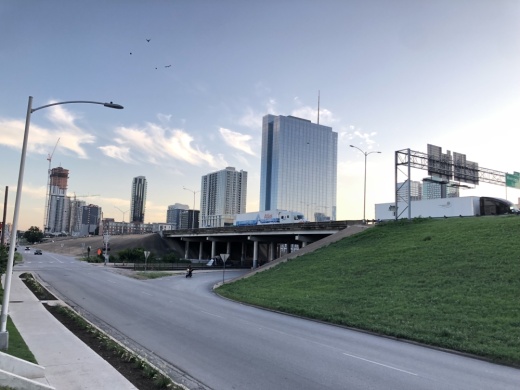“I'm on [US] 183 more, but every now and again I got to get on I-35,” Davis said. “I try not to, but sometimes I can’t avoid it.”
That's the way many feel about the road that consistently ranks as one of the nation's worst highways.
For the first time since the 1970s, the Texas Department of Transportation plans to massively overhaul the stretch from Hwy. 290 to Hwy. 71 through the Capital Express Central project in downtown Austin.
The $4.9 billion plan includes taking down the existing I-35 upper decks from Airport Boulevard to Martin Luther King Jr. Boulevard, lowering the lanes from Lady Bird Lake to Airport Boulevard and adding two high-occupancy vehicle managed lanes in each direction.
According to the TxDOT website, the state transportation agency will indicate its preferred design in fall 2022.
Meanwhile, the city of Austin is pushing for a design that will accommodate a cap and stitch to create better connectivity between East and West Austin. That project would be separate from the $4.9 billion, and funding would not come from TxDOT.
In a February 2020 report, the Urban Land Institute defined a cap as “a structural cover over the highway right of way that may support green space, a park, crossing streets, and/or buildings.”
Stitches tend to refer to widened bridges, which could allow for widened sidewalks, bike lanes and seating areas.
In that report, the institute identified crossings where caps and stitches would be most feasible. The largest recommended cap would run from East Caesar Chavez to East Fourth streets. Other possible caps included East Sixth Street to East Eighth Street and East 11th Street to East 12th Street.
As the city continues to partner with TxDOT, its optimism about the plan has grown.
“We do believe that the location recommended by the [Urban Land Institute] report will be feasible, at least at this point,” said Mike Trimble, director of the corridor program office, at an Austin Economic Development Corp. meeting Aug. 9.
“Obviously a lot more design work to go, both on the highway and the lid components, but at this point we think those locations will be feasible as well as potentially even a few more locations, potentially up to 13 acres,” he added.
Despite plans for a cap and stitch, some argue that TxDOT is missing an opportunity.
Jay Blazek Crossley, executive director at Farm and City, said that TxDOT’s latest iteration is disappointing, as it does not consider meaningful alternatives, such as Reconnect Austin, a plan to put the highway below ground from Lady Bird Lake to Airport Boulevard, and Rethink 35, a plan to turn the highway into a boulevard downtown.
“The purpose of this project is to add lanes,” Blazek Crossley said. “It's putting the answer in the question.”
An Aug. 10 Texas A&M Transportation Institute report determined that putting a cap on I-35 from Lady Bird Lake to East Martin Luther King, Jr. Boulevard would be cost prohibitive at $796 million. The report also said that Rethink 35’s boulevard concept would lead to increased traffic.
Blazek Crossley said that the report ignores the economic and environmental benefits of the designs, and he intends to continue to press TxDOT to reconsider proposals that would not add lanes to the highway.
“For people like me and for the people of Austin, there's going to be three to four more years of trying to work to make this project better,” he said.





